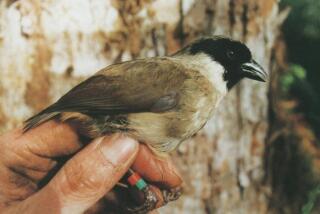Congress and Toxic Waste
- Share via
Congress has finally resolved an issue that has lingered in its halls for more than a century. It selected the rose as the national flower. To make it official, all that’s needed is the President’s signature.
What could be a better symbol of what this country represents than the rose? Its majestic beauty and fragrance captures our senses as it is displayed daily in floral arrangements and gardens throughout the nation. Its presence gives us that very feeling of peace and pleasure that nature can only provide.
Vying for selection against the rose was the marigold, a flower capable of growing in all 50 states and noted for its robustness and ability to survive in all seasons, except winter.
In many respects, toxic waste enjoys the same status. It, too, is present in all 50 states and is also robust, but unlike the marigold, it withstands even the most severe of winters.
Will Congress be able to resolve the issue of toxic waste in the same way as it has the rose? The reauthorization of Superfund has been under its consideration for only two years, not a century. It’s much easier to admire a rose than to admire a toxic waste dump, or to grow a rose than to clean up toxic waste.
If the Superfund program moves to extinction as a result of the failure of Congress to reauthorize it, we must wonder where our priorities should be--or have been.
Unlike the rose, no one will write a song or poem about toxic waste. No one will extol the virtues of its beauty or fragrance. No one will urge that it become one of this nation’s national symbols.
Yet, that is exactly what will happen if Congress fails to act. The thousands of toxic waste dumps that cover our 50 states will symbolize this country’s lack of commitment to the public health of its citizens. Perhaps the marigold would have been a better choice.
Perhaps Bette Midler will be motivated to sing another song.
WILLIAM N. HEDEMAN JR.
Silver Spring, Md.
Hedeman was director of the Superfund program at the Environmental Protection Agency from 1981-1985.
More to Read
Sign up for Essential California
The most important California stories and recommendations in your inbox every morning.
You may occasionally receive promotional content from the Los Angeles Times.












